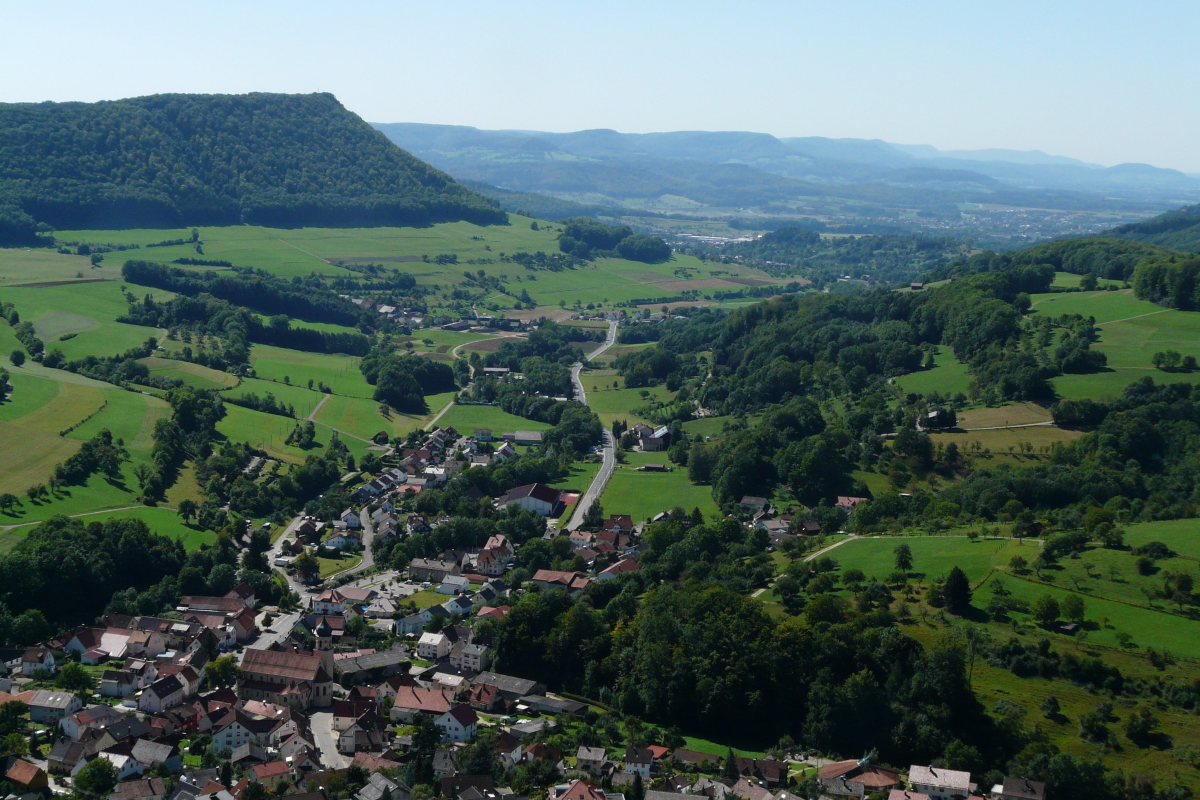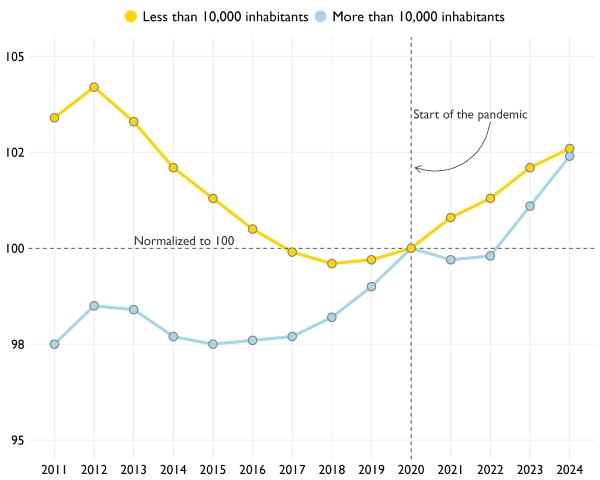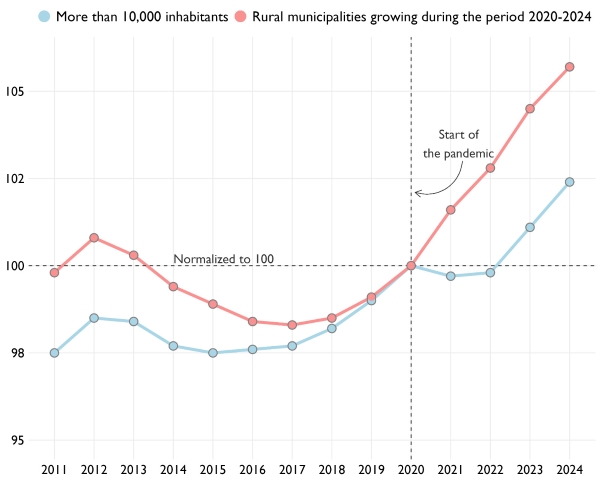
The economic and social progress of countries in the long term is determined, among other things, by the distribution of their population across the territory. The evidence tells us that the concentration of the population in large urban areas facilitates efficiency in the provision of services, promotes innovation and the exchange of ideas, and encourages the attraction of talent, generating more growth and more employment. The counterpart is the emptying of the rural world and, with it, the loss of dynamism of local activities and sectors such as agriculture or livestock farming; the deterioration in access to essential public services such as education or medical care; the degradation of multiple ecosystems due to a lack of land management; social isolation or the disappearance of traditions.
Spain has experienced a growing process of urbanisation: in 2024, 80% of the population lived in cities, compared to 72% in the 1980s. The loss of population in rural municipalities has been continuous, standing out as one of the most significant periods in the recent past.
COVID-19 marked a turning point in the demographic decline of the rural world. The rise of teleworking, the increase in digitalisation and the search for contact with nature after months of confinement resulted in a certain return to the villages: between 2019 and 2022, municipalities with less than 10,000 inhabitants gained 150,000 residents and recorded an accumulated growth of 1.6%, higher than the national average. Once the pandemic is over, and with data to 2024, the rural population has continued to grow, thanks to the advance of municipalities close to the country's large metropolitan areas, which seem to have configured a new area of high population dynamism [Figs. 1 and 2].
Fig. 1. Evolution of the population of cities and rural municipalities in Spain (base 100= 2020).

Source: National Institute of Statistics.
Fig. 2. Evolution of the population of rural municipalities growing after 2020 and cities in Spain (base 100= 2020).

Source: National Institute of Statistics.
The factors behind this behaviour seem to be manifold, but among the most relevant could be the improvement of transport connections and infrastructures, the proximity of these towns to essential services and the lower cost of access to housing, in a context of sharp price rises in most cities.
The fate of many villages will depend on their current size, their demographic pyramid, their proximity to booming urban centres or their capacity to generate endogenous activity. Well-connected rural municipalities that are able to take advantage of the opportunities offered by the ecological transition and digitalisation to enhance their residential attractiveness and become lively communities with their own economic, educational or cultural projects could continue to gain population in the future.
For more information, see: Banco de España. Informe Anual 2020. Capítulo 4. La distribución espacial de la población en España y sus implicaciones económicas. Madrid: Banco de España, 2021; and National Office of Foresight and Strategy (coord.). Spain 2050: Fundamentals and Proposals for a Long-Term National Strategy. Madrid: Ministry of the Presidency, 2021.